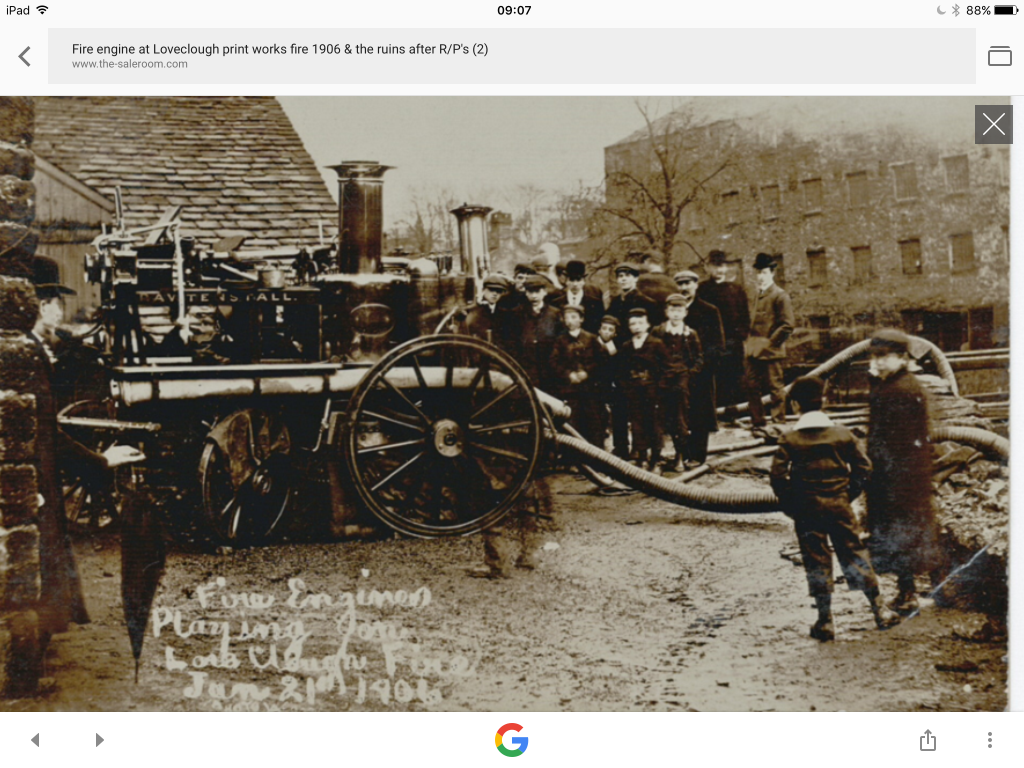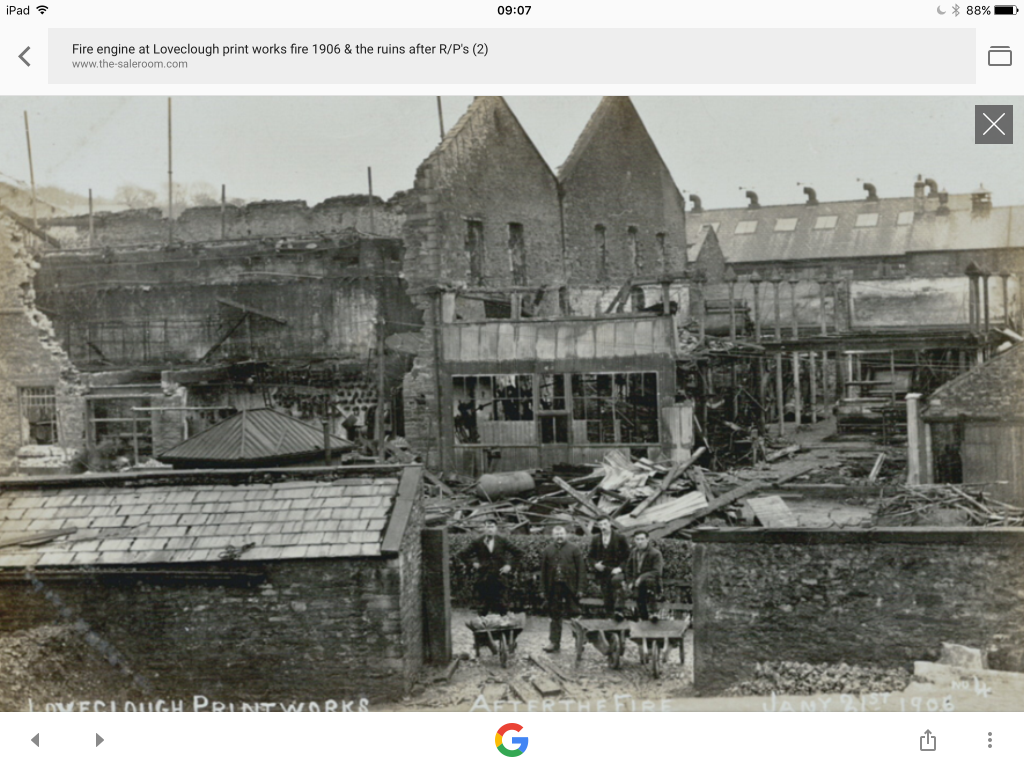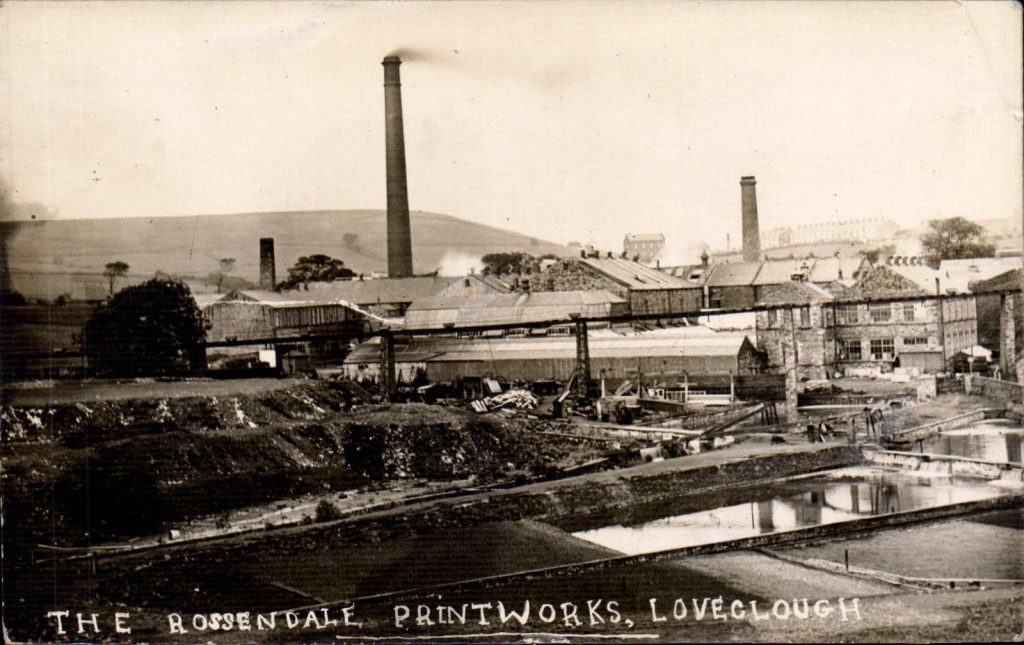
Loveclough Printworks at the bottom of Commercial Street was a place of work for many from Loveclough, some of whom fought and died during the Great War including worshippers of Providence Chapel. The factory had a chequered History and I highlight its existence from 1832 to the 1980″s including the devastating Fire there in 1906 after which many workers lost their livelihoods, those with the facility to enlarge the above photograph will make out Providence Chapel at the bottom of the slope between the two chimneys.

1832 the Mill was owned by Richard Holt and occupied by Unsworth and Cooke and by 1846 the Mill had eight machines with two Steam engines by Graham.
1866 there was a strike at the works by the printers for an advance in wages, the masters promised them to pay as much as any other printing establishment, and after three days consented to go back to work under that promise.
1868 was the year an extensive robbery took place at the then Rossendale printing Company Loveclough, where an iron safe was broken into and £550 was stolen, a considerable sum for the time, six men were caught for the offence.
1870 the Mill came into the Lee family and it was Lennox B. Lee who became Chairman of C.P.A. in 1908.
1876 and also in 1877 In the days before Health and Safety was prevalent several accidents occurred at Rossendale Print Works Loveclough injuring workers.
William Bentley employed as a winder was engaged in putting a strap on a drum (probably a long rotating leather strap run from a shaft above) when he was taken up by the strap and had his left arm broken in two places and nearly torn from his shoulder.
William Trippier a lad of only 14 years lost his life after being badly scalded after falling into a tub of condensed Steam from one of the Engines.
Two young men were injured at the Works on the same day in two separate incidents when one had his arm pulled between two rollers as he was cleaning them resulting in his arm being flattened to the elbow!, the other poor lad working in the Finishing Room had his hand entangled in a Finishing Machine.
1883 it was reported that under the guidance of Sir Joseph C Lee the Principle and then Manager Mr John Bailey that electric lights were being used at the works at Loveclough. The lights being installed by the Manchester and District Edison Light Company with a Hopkinson improved Dynamo driven by a 30 HP engine running at the rate of 1,100 rpm and capable of producing light equivalent to 5,200 candles, much to the pleasure of the then 460 employees. The new lighting was installed in the Colour Shop Offices, Engraving, Roller, Winding and Machine Rooms. The 260 incandescent lamps replaced the old 400 Gas Jets and each machine had its own lights.
More improvements arrive in 1897 with the addition of a bowling green and a Reading Room for workers to use
1906 The Great Fire (see below) destroyed most of the mill and put lots of people out of work resulting in many emigrating.
1914 to 1918, The Great War years, when many employees went to serve King and Country, not all returned.
1915 finds the beginnings of the Move to becoming C.P.A Calico Printers Association
1933 Plans approved for an extension of the Boiler House approved for the C.P.A Loveclough Works
1936 Loveclough Printing Company Ltd now part of C.P.A
1968 Yet another name change after a merger with English sewing Cotton, now no longer Calico Printers Association but a new name, English Calico.
1973 The name changes to Tootal!
1979 A bad year, as it is announced that 240 workers will be laid off in may of that year, the reason given is that from June last year (1978) the run of bad weather had resulted in a fall in demand for summer dresses that the Company prints cloth for. By September of 1979 200 workers at the troubled works were put on a one day week, with the Managers in October of the same year assuring workers and the area in General that there was no truth in the rumours that the Printworks was about to close.
1980 Tootal announce the closure of Loveclough Printworks with the loss of 240 jobs. They blame increasing Imports and reduced consumer spending for the closure, with no reprieve in sight the mill closed in July 1980.
The Lodge behind the mill was called Padiham Lodge
THE GREAT FIRE OF 1906
The Photographs below this write up of the fire in 1906 all relate to the days after the fire, the first being of the Machine Room albeit covered in snow, after all it was January and minus the roof! There is also a splendid photo of one of the fire engines that attended that awful night. I have included a report of the incident at the time.
January 21st 1906
The morning of Sunday January 21st, 1906, was as peaceful as any other, but it was all destined to change, it was destined to be the day of one of the biggest fires in Rossendale.
An account of what happened by Mr A.W. Savage ( Arthur Savage served in WW1 with the Durham Light Infantry) a Crawshawbooth lad.
At about !0 in the morning I heard my neighbours shouting “Loveclough is on fire, and the Barleyholme sections gone.” Without hesitation I ran into my house and grabbed my cap and was off as fast as my legs would carry me.
The big burly P.C Sefton stood in the middle of the village looking flustered, point duty, the traffic controlling method was not used then and unknown,
As I ran up Bull Brow the big Rawtenstall Fire Brigade passed me, and the steep incline was passed with sparks flying from the horses shoes as they thundered along, the powerful animals had already galloped a mile and a half and steam rose in clouds from their bodies.
The Fire engine was a mass of polished and shining Brass and Copper and the name of the maker stood out boldly (Shand and Mason,) it was a scene of both life, animation and emergency, in fact it was a pageant and so they were gone as a cloud of sand rips over a desert.
I never slackened my run until I reached the “Coal Shuttle” (overhead bucket system) at Rings Nook, when some intuition made me turn left and straight through the yard and onto the Viaduct that carried the small 2 cwt waggons of coal from Goodshaw Hill mine. There I was, 60 feet above the valley with just a few more adventurers as company and with a grandstand view, even as a lad I could see all was chaos!
The fire was travelling along the front of the mill as fast as you could walk and steam drying cylinders were exploding like bombs. The steel framework of machines made fantastic contortions before collapsing and some appeared to raise themselves up before dropping with a mighty bang and ninety pound copper cylinders melted like candles and through the glare of the fire they shone like burnished gold, as I did not know the layout of the Mill I did not know what part of it I was watching.
My eyes moved from one department to another and as the flames spread they exposed another part of the interior of the works until as the day wore on it began to look like a great hollow shell, like looking down into the crater of a Volcano.
Then the Commander of Rawtenstall fire Brigade, a Superintendent Wood said that at the height of the fire hundreds of gallons of water per minute were poured into the blaze from 16 jets, and it is only through the efforts of the Brigade that any portion of the Mill was saved. An estimate of £100,000 damage was attributed to the fire, a very considerable amount for the time.
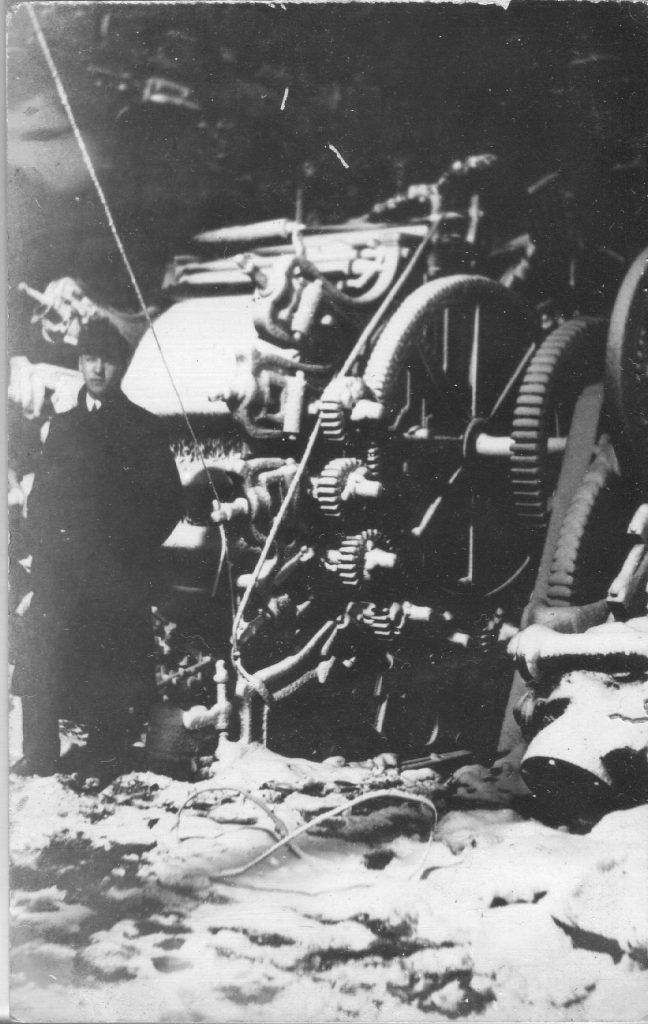
The Machine room
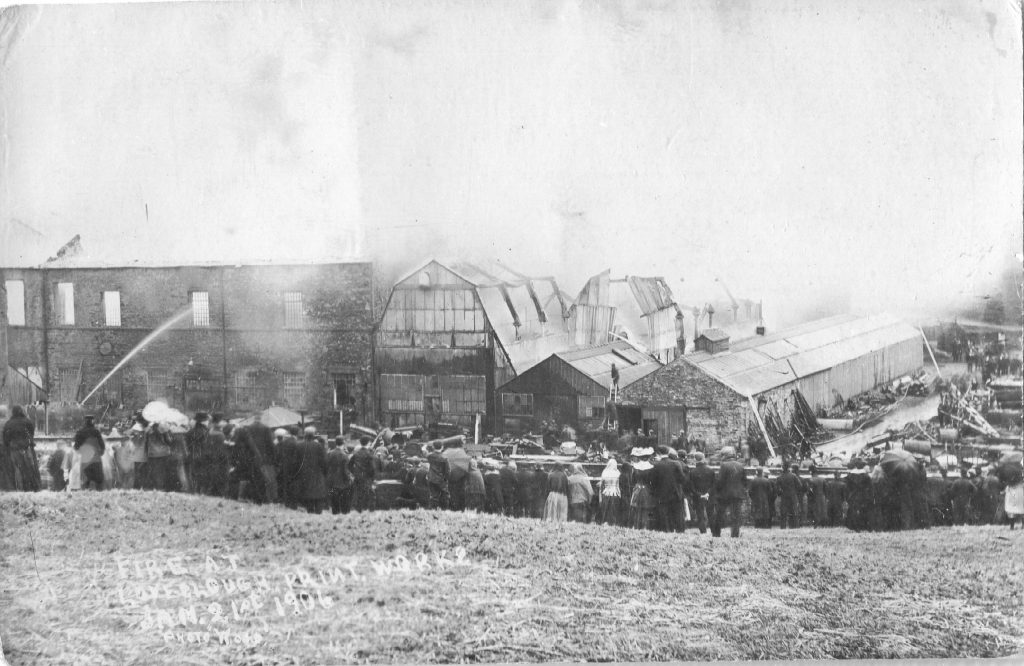
General view of the fire with water being sprayed on an upper storey room, quite a crowd gathered close to the site of the fire, I am quite sure that would not be the case today!
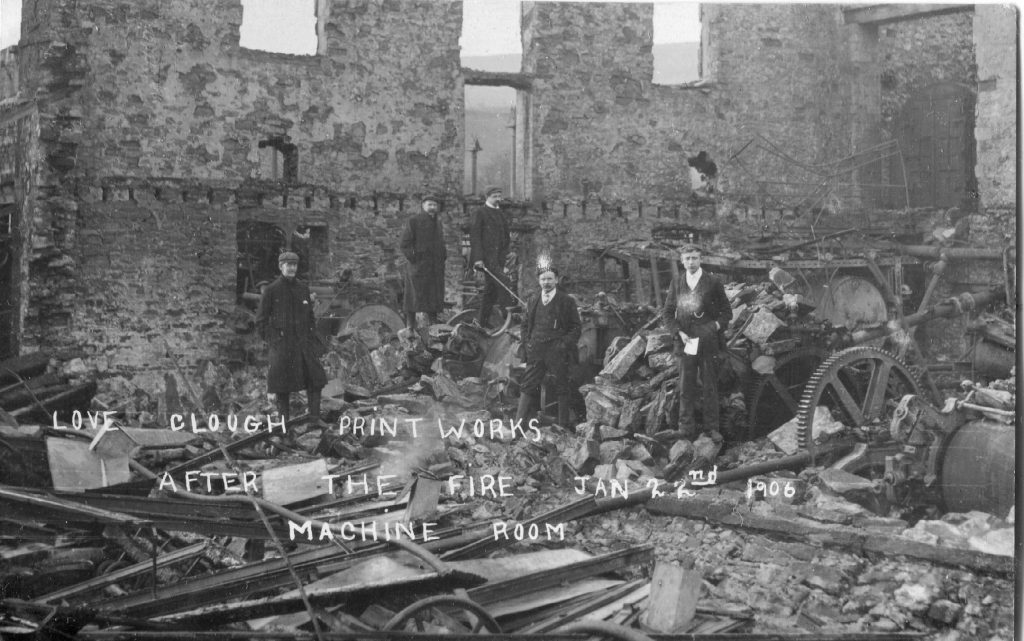
Interior after the fire had done it’s worst on the 22nd January 1906, some of the workers surveying their destroyed place of work.
